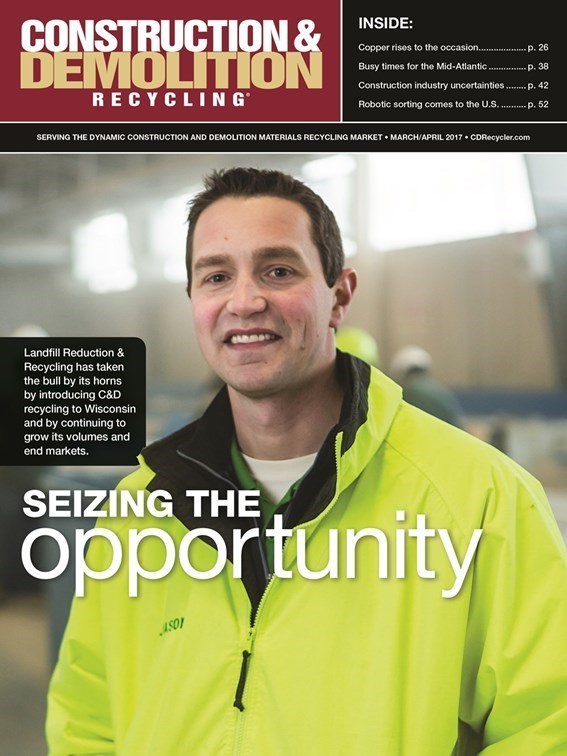
When I contacted several C&D recycling and demolition firms in the Mid-Atlantic for the Regional Spotlight feature appearing in this issue, I was encouraged that all of them were reporting healthy volumes at their facilities.
Some are seeing so much opportunity to recycle that they are in the midst of or are considering expansion. Cooper Tank Recycling in Brooklyn, New York, will open its second facility later this year to meet increasing demand. Revolution Recovery, also is busy at its Wilmington, Delaware, and Philadelphia facilities, and both companies I spoke with in Virginia—Broad Run Recycling and S.B. Cox—are busier than ever.
It is great to hear that construction activity is healthy and projects are moving forward, giving these facilities plenty of material to process, but if those facilities can’t move material or fetch a decent price for them, they won’t be profitable.
Both Cooper Tank and nearby recycler Liotta Bros. say they are feeling pressure from increased scrutiny of their materials that come from the demolition process, and finding outlets for C&D fines has been continually challenging in most U.S. markets.
The Non-Hazardous Secondary Materials Final Rule including C&D wood was a huge victory for the industry in 2016. It was a hard fought battle by the industry to convince regulators that wood coming from a C&D facility, processed using best management practices, was, in fact, clean. But some local ordinances and green building certifications continue to view alternative daily cover for fines or incineration of C&D wood on par with landfilling, or they prevent the use of these materials for anything else.
Wood and fines aren’t the only targets of rules and regulations that inhibit their use. While many municipalities across the country are adopting C&D ordinances, they do no good if those processing the materials can’t find homes for their end products. The laws should be written in a way to support and develop markets for these materials. This not only includes uses for fines and wood, but also use of recycled content, like asphalt shingles, tires and recycled aggregate in road bases and paving materials.
One of the reasons for including a series of articles in 2017 on the different regions of the country is that regulations and markets can vary so much depending on what part of the country you are in. Even within a particular region, success can depend on what city you are in and what the local ordinances are.
Sharing this information is intended to provide insights on a particular area that could be adopted in other regions. It could also make people aware of issues that associations or other lobbying groups may want to educate citizens and government officials about. It also might show entrepreneurs where opportunities may exist to expand an existing business or open a new one. I hope this series of Regional Spotlights will do all of the above, and I welcome any feedback you have.

Explore the March 2017 Issue
Check out more from this issue and find your next story to read.
Latest from Construction & Demolition Recycling
- Connect Work Tools names new service manager
- Architects’ billings slow, contractors stay busy into summer
- RMDAS figures show ferrous still in a trough
- Mt. Diablo receives RCI certification at Pittsburg, California, C&D facility
- Plastics recycling company wins top prize at NextCycle Colorado Pitch Competition
- Arena-sized venue is demolition target in Alabama
- Brandt scrap handlers available through Murphy Tractor
- Hendrickson celebrates Tiremaax installation milestone





